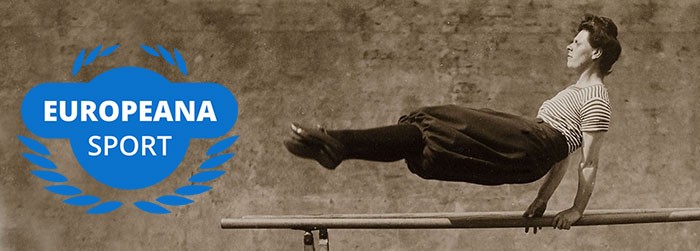The sport we enjoy today has classical roots. In this blog, Classics teacher Gary Vos explores links between football and antiquity.
The modern marathon was unwittingly instituted by an ill-fated messenger who ran to Athens all the way from the site of the Battle of Marathon (490 BC) to tell the Athenians of the Greek victory. After relating the good news, he dropped dead.
But what are the classical roots of football, the world’s most popular sport? What we understand as football today did not exist in antiquity, but that did not stop one German classicist football aficionado.
Football in ancient Greece?
In the most venerable encyclopaedia on all matters ancient, affectionately known as Der neue Pauly, Mischa Meier authored and published a spoof entry on the Greek game of ἀποπουδοβαλία (apopudobalia) or, in Latin, lusus pedifollis.
This was meant to attribute the game's invention to anyone but the English. His elaborate joke prompted a tongue-in-cheek exchange of arguments for and against the existence of an ancient equivalent to modern football in the Petronian Society Newsletter, which true to its eponym need not be taken entirely at face-value. You can read a facsimile of the 'theory' and the responses (via the Wayback Machine).
Classical names
The above does not mean that there is no classical football heritage at all.
An impressive number of football clubs are named after Greek and Roman heroes, notions, places, and events. The Italian football team Juventus is probably the most famous example. Its name stems from the Latin word iuventus meaning 'youth' (an ironic contrast with its nickname La Vecchia Signora which means The Old Lady).
Another Italian club, Hellas Verona takes its name from Hellas, the Greek name for Greece. The club was founded by students of Greek and Latin at a local high school, Liceo Maffei (which was itself named after Verona's foremost antiquarian).
In the Netherlands, one can compare Excelsior Rotterdam (‘higher, loftier’, from the Latin excelsus).
Similarly, in Slavic countries, there are many clubs called 'Spartak'. These are not named after the Greek place Sparta (which has otherwise lent its name to various teams), but in tribute to Spartacus, the Greek gladiator who raised an army of slaves who rebelled against their Roman overlords. In similar ways, in the Soviet age, these teams symbolised a 'rebellion' of the workers against an elite (capitalist, state-sponsored, or otherwise).
Similarly, in the Netherlands, AFC Ajax is named after a Greek hero who fought in the Trojan war. There were two Ajaxes in that war: one, the son of Telamon, was the king of Salamis; the other, the son of Oileus, the king of Locris. To which does the club refer?
Most people think it is the former, that Ajax being the greatest hero after Achilles (although experts claim it’s the latter Ajax, an ‘offender of the gods’ who raped the Trojan priestess Cassandra).
The former sounds like the safer choice for an eponymous hero, until one remembers his ignominious end, throwing himself onto his own sword after he has lost the battle for Achilles' armor, as immortalised in Sophocles' tragedy.
The Turkish team Fenerbahçe’s name is wonderful: it is named after one of Istanbul’s quarters with a famous lighthouse. Its name is a compound of Greek (fener- < Gr. φανάρι(ον), phanari(on), ‘beacon, lighthouse’) and Persian (-bahçe < bagche, ‘little garden’), reflecting Istanbul's unique history between Europe and Asia. Fenerbahçe is thus 'Lighthouse Little Garden FC'.
Footballers
Player names can also be classically inspired, such as the Brazilian Júlio César, who ironically, given that he shares his name with the aggressive general Julius Caesar, signed with Italian side Juventus as a defender in 1990.
Other examples include Brazilian midfielder Sócrates, the inventor of the no-look back heel pass. He was nicknamed Doctor Socrates by his teammates because he, like the Athenian philosopher (could Sócrates' famous beard be a tribute?), was always burying his nose in books and earned a medical degree. (A persistent but untrue story claims he studied at University College Dublin, Ireland.)
Virgil van Dijk, Liverpool's Dutch central defender, shares his name with the Roman poet Vergil/Virgil (the spelling is debated), who gave Rome its foundational epic, the Aeneid.
The names of these players – from Brazil and Breda, The Netherlands but with a Surinamese heritage – betray a colonial influence. Since this is now finally on the agenda of international football, it is worthwhile to recognise these Classical influences for what they are and the history behind them. In order to do so, however, we need to be willing and able to access each other's cultural heritages.
We should not forget that the trophy lifted by the winning team ultimately derives from Graeco-Roman ritual: the winning army would erect a τρόπαιον / tropaeum to commemorate their victory over their opponents. A 'Eurocentric' view of history runs through the discipline of Classics and sport: Romans versus the Mediterranean, Greeks versus Persians, West versus East - 'us' versus 'them'.
Just as the civilisations of Greece and Rome were firmly embedded within the wider world and not self-contained institutions, football transcends the realm of sport alone and is a major social, economical and political factor (as the current furore about the World Cup in Qatar shows).
It is high time that narratives of segregation and conquest give way to a 'we' collectively and inclusively - after all, it takes two teams to play, and a league to keep things interesting.
Read more
- List of sports team names and symbols derived from Greek and Roman antiquity
- Lighthouselittlegarden F.C. - on the name of Fenerbahçe football club
- Greeks, Romans, monks, and murder: the chaotic history of football in Britain
Author's note: This article was submitted in March 2021.
Share your sport story
Can you help us to tell the story of sport in Europe in the past and the present?
We invite you to tell us about your sport experiences through objects like photographs, memorabilia, equipment or prizes.

